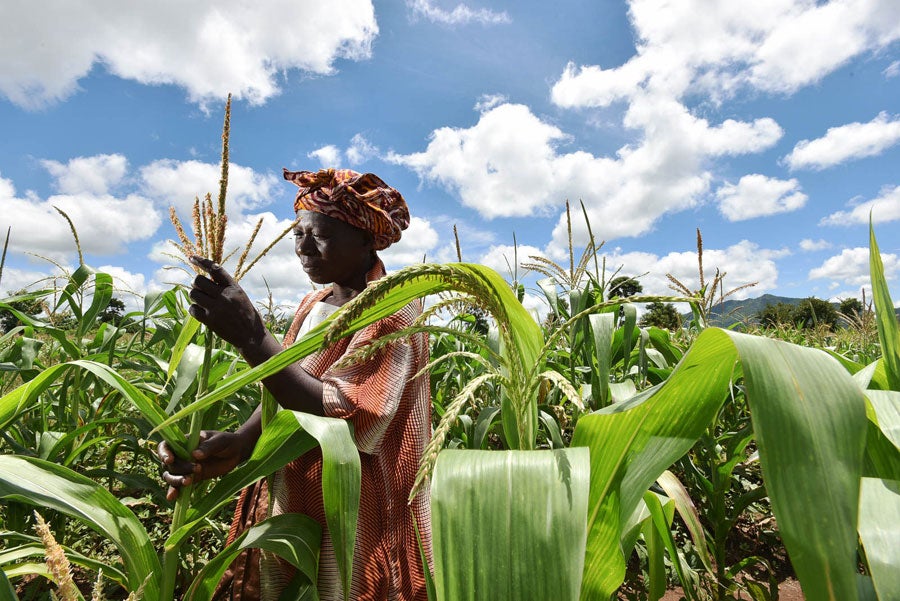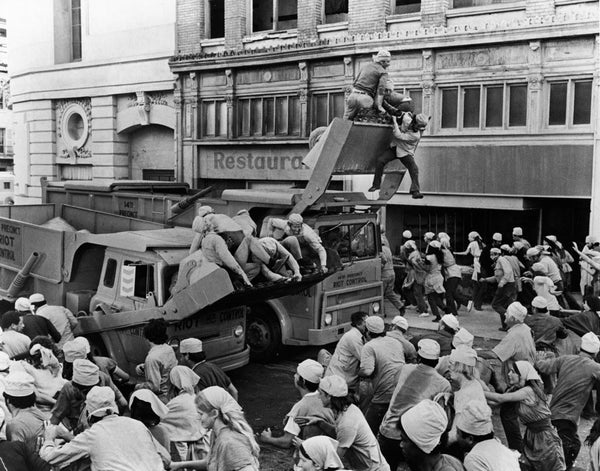This article was published in Scientific American’s former blog network and reflects the views of the author, not necessarily those of Scientific American
The global food system is under increasing strain from climate change, water scarcity, and soil and biodiversity loss. History shows that lack of food leads to war. In his frightening book Food or War, published in October 2019, science writer Julian Cribb argues that “on current trends, the existing food system will tend to break down, first regionally and then globally, owing to resource scarcity from the 2020s onward, and especially toward the mid-century--unless there is radical change in the world diet and the means by which we feed ourselves. This will lead to increasing outbreaks of violence and war. Nobody, neither rich nor poor, will escape the consequences.” His book offers a sobering view of our impending future if we continue our business-as-usual approach to climate change and agriculture, but offers creative solutions on how we can avoid a desperate Soylent Green-like future where civilization breaks down due to food scarcity.
History lessons
Drought is civilization's great enemy. More intense droughts due to global warming may be the biggest existential threat civilization faces, because drought impacts the two things we need to live--food and water. When the rains stop and the soil dries up, cities die and civilizations collapse as people abandon lands no longer able to supply them with the food and water they need to live. Cribb’s book begins with some fascinating (and disturbing) history lessons. He documents 25 food conflicts that have led to famine, war, and the deaths of over a million people—mostly caused by drought. For example, China’s drought and famine of 1630 – 31 led to a revolt which caused the collapse of the Ming Dynasty. Another drought in China in the mid nineteenth century led to the Taiping rebellion, which claimed 20 – 30 million lives.
On supporting science journalism
If you're enjoying this article, consider supporting our award-winning journalism by subscribing. By purchasing a subscription you are helping to ensure the future of impactful stories about the discoveries and ideas shaping our world today.
Since 1960, 40 – 60% of armed conflicts have been linked to resource scarcity, and 80% of major armed conflicts occurred in vulnerable dry ecosystems. Hungry people are not peaceful people. In a section titled “Future Food Wars”, Cribb ranks these areas at the highest risk for future food conflicts:
1. South Asia (India, Pakistan, Bangladesh and Sri Lanka)
2. Africa
3. China
He also brings up the specter of something truly awful to contemplate: megacity collapse. There are 47 megacities in the world with populations in excess of 10 million, and these megacities will become increasingly vulnerable to food and water shortages and climate change-related impacts from sea level rise and extreme storms. The collapse of a megacity, and the resultant flood of millions of refugees out of a city which can no longer sustain them, would cause severe impacts to the global economy.
Climate change is a huge threat to food supplies
Cribb has an excellent section detailing the threat climate change poses to food supplies. The big issue: hotter temperatures generally reduce grain yields. This is a huge problem, since food demand is expected to double by the 2060s due to an increasing population and the demand for higher-protein animal-based foods. Cribb quotes a UN Food and Agriculture Organization study from 2015 which found that under a high-emission climate scenario, harvest reductions by 2100 of between -20 and -45 percent are expected for maize (corn), between -5 and -50 percent for wheat, between -20 and -30 percent for rice, and between -30 and -60 percent for soybeans. These reductions are relative what would occur compared to if the climate did not change. Unfortunately, Cribb overstates the danger by neglecting to mention that the study also said that these impacts are likely to be at least partially offset by the beneficial effects of CO2 fertilization, since plants grow more vigorously in high-CO2 conditions. Assuming full effectiveness in large-scale production, climate change impacts would then range between -10 and -35 percent for maize, between +5 and -15 percent for wheat, between -5 and -20 percent for rice, and between 0 and -30 percent for soybeans. Nevertheless, these numbers are probably underestimates, since Cribb brings up the point that agricultural yields will also suffer due to sea level rise inundating farmland, increased heavy precipitation events, increased water scarcity for irrigation, more damaging outbreaks of crop diseases and insect pests and lower calorie density of grains grown in high-CO2 conditions.
A weakness of the book: not sourcing original research
Food or War contains hundreds of references, many of which I found quite valuable to follow. However, one weakness of the book is Cribb’s propensity to cite press releases or articles in the popular press rather than original published scientific papers. One example--Cribb says: “The American Geophysical Union’s grim assessment is that by 2050, 1.8 billion people will be living in regions whose groundwater has run out. This will probably force most of them to move.” I followed the link he gave, which revealed that this was an American Geophysical Union press release about a presentation at one of their conferences in 2016. Follow-up peer-reviewed research published by the authors in 2019, Environmental flow limits on groundwater pumping, warned that the unsustainable pumping of groundwater could lead to low river flows that would potentially cause devastating effects on ecosystems for 42 – 79% of all watersheds in which there is groundwater pumping. The paper explained that, in general, groundwater will still be profitable to pump even when these devastating environmental effects begin to occur, though. Cribb’s conclusion that the loss of groundwater by 2050 in areas where 1.8 billion people live would “cause most of them to move” was not a conclusion that the researchers made.

Figure 1. A woman inspects her corn crop in Malawi. Credit: Neil Palmer International Center for Tropical Agriculture
Final Recommendations
Cribb concludes his book by giving a 1-page list of his vision for the future. These are big dreams, but if we want to avoid a Soylent Green future in an age of accelerating climate change impacts, we will need to move in the direction Cribb envisions:
1. Develop a sustainable, nourishing and resilient global food system suited to conditions of the 21st century and founded on ecological farming, aquaculture and urban food production.
2. Replan all of Earth’s cities so that they:
a) recycle all their nutrients and water back into food production and fertile soil,
b) have a sustainable, climate-proof local source of food year-round, and
c) are truly green.
3. Reallocate 20 percent of the world defense spending to ‘peace through food.” Understand that sustainable food investment is defense spending, and reduce tensions and so:
a) prevent many wars from starting in the first place, and
b) avoid vast movements of refugees which may otherwise overwhelm other regions, countries and cultures.
4. Rewild half the planet through a global movement led by small farmers, former farmers and indigenous peoples, known as Stewards of the Earth, to end the Sixth Extinction of life on Earth.
5. Raise a new generation of food-aware children, who understand how to eat healthily and sustainably, through a Year of Food in very junior school on the planet.
6. Put women in charge of business, politics, and government, religion and society for the sake of human civilization and its survival in the century of its greatest peril.
Food or War is $9.79 from Amazon.com. I give it a rating of three stars out of four.
My related posts
Fifth Straight Year of Central American Drought Helping Drive Migration, December 2019
Newly Identified Jet-Stream Pattern Could Imperil Global Food Supplies, December 2019
Climate Change Likely to Increase Frequency of Extreme Summer Weather From “Stuck” Jet Stream Patterns, November 2018
Food System Shock: Climate Change's Greatest Threat to Civilization - 2016
Ten Civilizations or Nations That Collapsed From Drought - 2016
Avoiding a Soylent Green Future by 2040 - 2016
